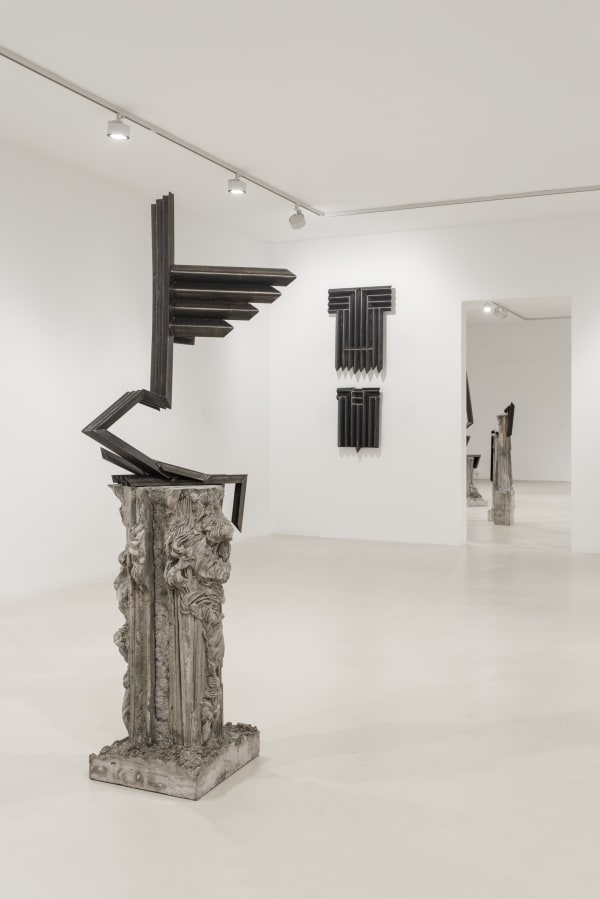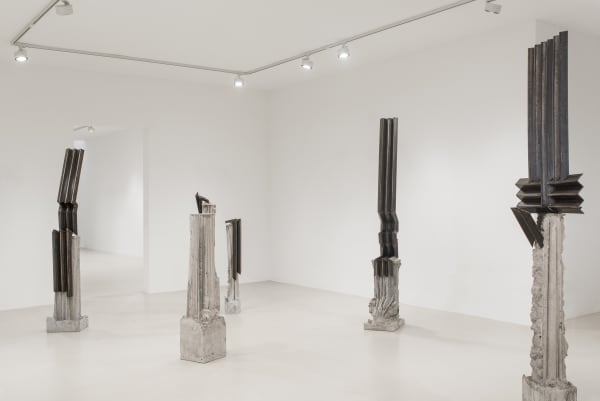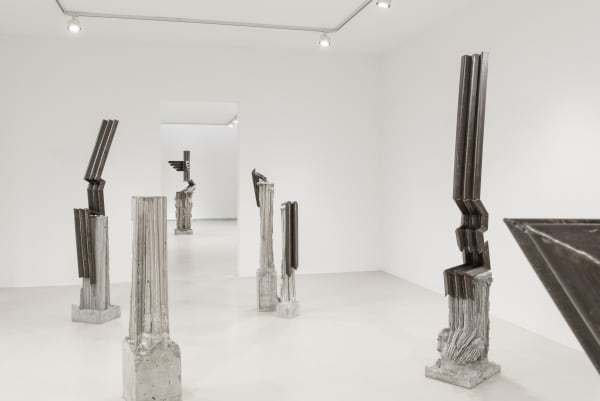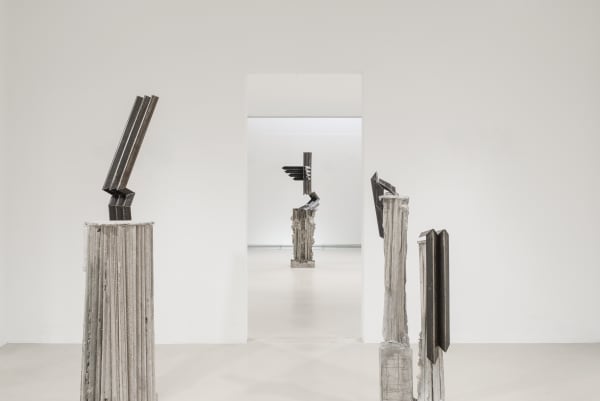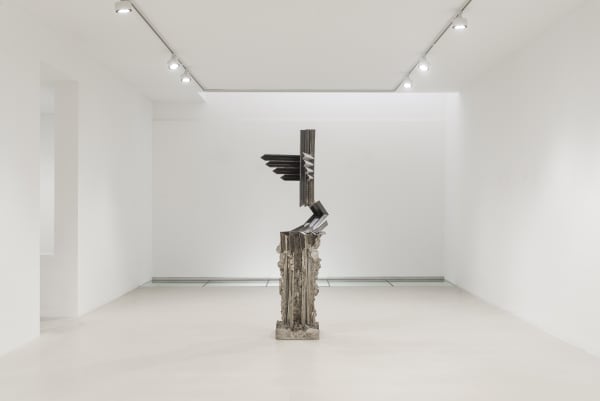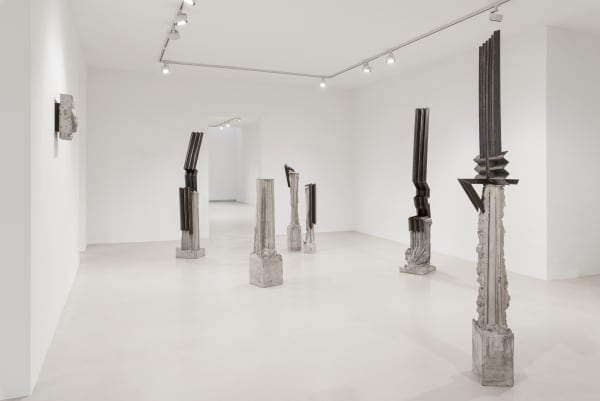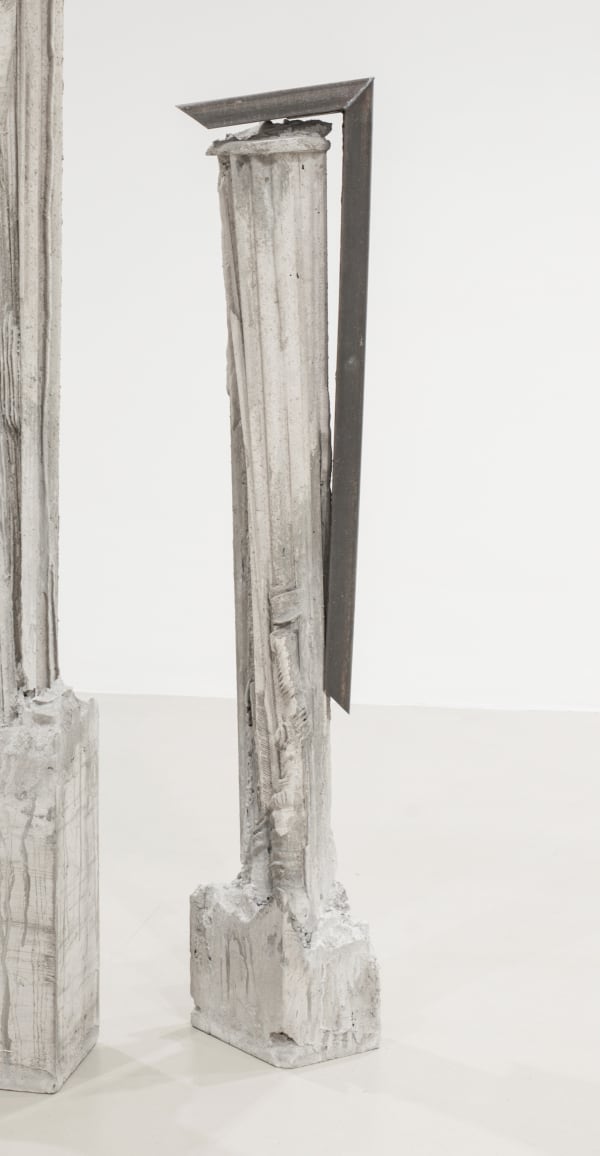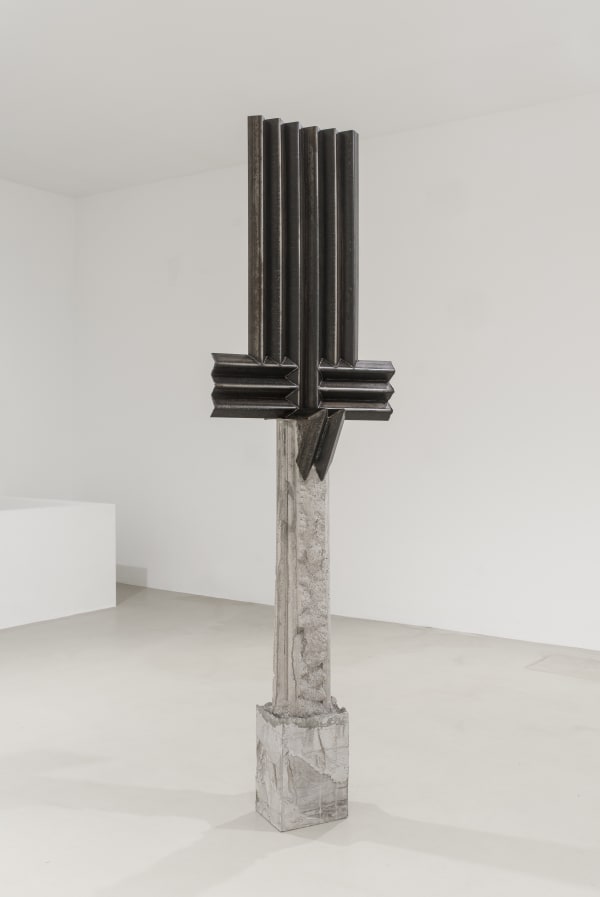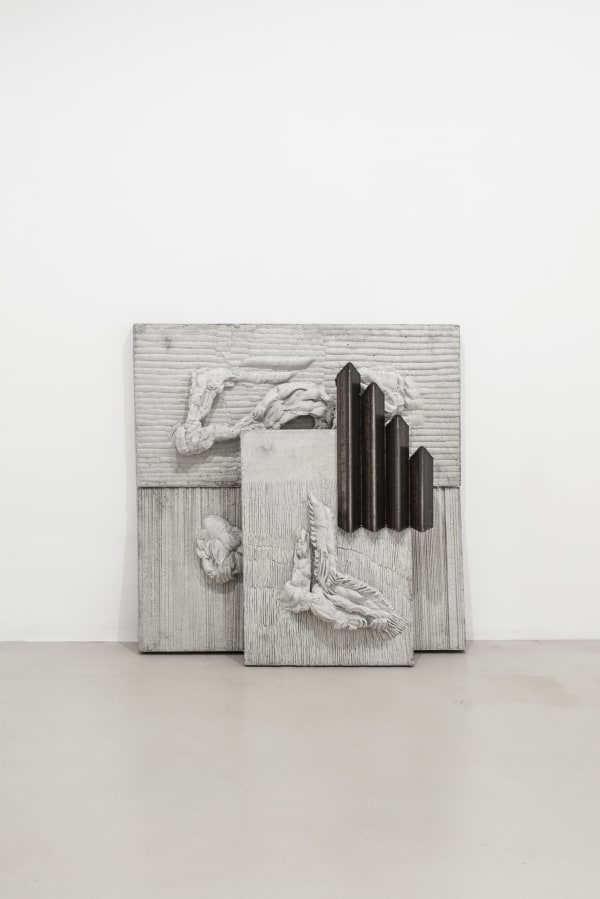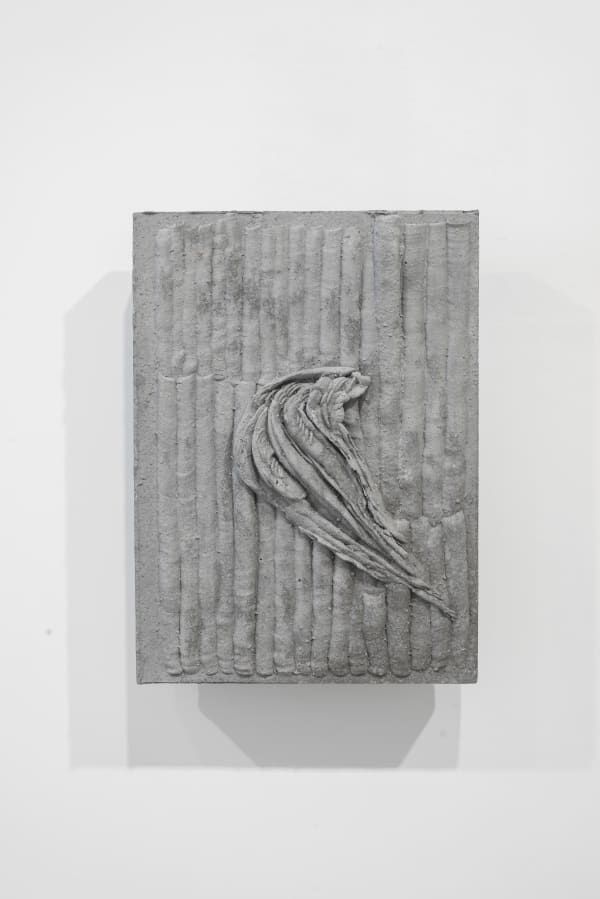luca monterastelli: old masters
Past exhibition
Overview
KETELEER GALLERY is very pleased to introduce Old Masters, the first solo exhibition by Italian artist Luca Monterastelli (1983, Forlimpopoli, IT) at the gallery. The exhibition consists of an entirely new series of concrete and steel sculptures.
Press release
Our greatest pleasure, surely, is in fragments, just as we derive the most pleasure from life if we regard it as a fragment, whereas the whole and the complete and perfect are basically abhorrent to us. Only when we are fortunate enough to turn something whole, something complete or indeed perfect into a fragment, when we get down to reading it, only then do we experience a high degree, at times indeed a supreme degree, of pleasure in it.
Thomas Bernhard, Old Masters: A Comedy, 1985
Everything falls apart. This is not meant to sound defeatist, we’re merely observing how everything around us eventually and inevitably disintegrates. In nature, the arrow of time shoots – as we well know – only one way, from order to chaos. The whole universe is permeated by this ruthless, unmistakable law. History is an ever-expanding ruin from which we try – to no avail – to organize the debris. Where is beauty and comfort to be found?
The Romantics were fascinated with impermanence. They especially loved the picturesque character of ruins, decaying constructions and archaeological sites. To artists, thinkers and poets, these became specific tropes enabling melancholic daydreaming about the transient and fleeting nature of human existence. The ruin served as a vanitas for the blind faith in progress. Sehnsucht – the romantic mood – comes from the power of the fragment, and turns into the pathological desire for an unattainable ideal, a fiery yearning for an absolute oneness or the illusion of lost harmony. Modernity is a state caught between the past and the future, nostalgia and utopia. Both of which are equally treacherous. Utopias breed ideological monsters, and ‘in the sunset of decay, everything is illuminated by the aura of nostalgia, even the guillotine” (Kundera).
Fortunately life has the ability to (re)organize. This is why we talk of organisms, which are able to order chaos spontaneously. It’s this élan vital with which biological and social systems resist entropy – for however long they can.
Avant-garde art has always played an ambivalent role in totalitarian regimes, both in the East and the West. Numerous artists initially felt drawn to the idea of being recognised as official state artists, to play an ideological role in the creation of a new political world order. However, their desire was quickly met with frustration when modern art turned out to be less welcome than expected and all cultural production became subservient to the political party’s power cult, organised in guilds. Propaganda art, the state censored ‘return to the Classics’, resulted in conventional sculptures, mosaics and bas-reliefs – monuments for the greater honour and glory of the totalitarian empire.
Postmodern criticism instilled in us the belief that there are no more great stories: everything is hopelessly fractured and the pieces can’t be put back together. We’re bombarded with fragments of words and images on a daily basis without being able to discern even the slightest trace of a coherent whole. The bits and pieces of these semiotic ruins are used to construct a temporary identity, never fully satisfying us. Isn’t this why we are drawn to populist discourse referring to culture as a single body, a quintessential entity, a historical canon?
Every fragment implies the absence of what once was or is about to be whole, but we should admit to this: shards also shine on their own. There’s something unmistakably beautiful about fragments; they keep totality at bay. Let’s look at Luca Monterastelli’s works, brought together in the aptly named exhibition Old Masters – based on the novel by Thomas Bernhard. His choice of materials is modernist, his visual motifs are fragmentary and thus highly suggestive. Monterastelli invokes emblems, symbols and monuments used by established powers to self-aggrandise and consolidate their positions, and subsequently disarms them with a great deal of finesse. Looking at his works is finding joy in the fragment. Out of assembled materials and cast forms Monterastelli allows a new visual imagery to arise like a phoenix from the ashes of its own demise. The visitors of the exhibition are left to roam around an abstract, dark forest made of steel and reinforced concrete.
In the artist’s world, things can never truly exist without words. Monterastelli’s poetic titles shouldn’t just be read, but also heard, like music for the mind. His verses are more than just captions; they make his works all the more allegorical. He thinks of his texts as parasites, subtly engrafting the works, similar to how columns do so with buildings, between the interior and the exterior. Text and image similarly complement and interrupt each other, like partners in an endless dialogue.
Pieter Vermeulen, 2020.
Luca Monterastelli has already had several solo exhibitions, such as at Villa Mondolfo, Como, Italy (2017), HIAP, Helsinki, Finland (2014), viafarini DOCVA, Milan, Italy (2013), Centre d’art contemporain Parc Saint Léger, Pougues-les-eaux, France (2012), Chez Néon Diffuseur d’Art Contemporain, Lyon, France (2012) and MARS, Milan, Italy (2011). He took part in several group shows, including La Triennale, Milan, Italy (2015), the 56th Venice Biennale, Italy (2015). His work has been shown at places including casa Testori, Novate Milanese, Milan, Italy (2014), Fondazione Bevilaqua la Masa, Venice, Italy (2014), Museo Marino Marini, Florence, Italy (2013) and Brown Project Space, Milan, Italy (2010).
Installation Views
Works
-
 Luca Monterastelli, Keep the dust In Your Mouth - This Is How You Do It (LM#169), 2020
Luca Monterastelli, Keep the dust In Your Mouth - This Is How You Do It (LM#169), 2020 -
 Luca Monterastelli, Make Fear Your Best Thing - This is the Way You Do It (LM#163), 2020
Luca Monterastelli, Make Fear Your Best Thing - This is the Way You Do It (LM#163), 2020 -
 Luca Monterastelli, Now You Are Aware (LM#172), 2020
Luca Monterastelli, Now You Are Aware (LM#172), 2020 -
 Luca Monterastelli, Surrender, You Do Want to Be Here (LM#173), 2020
Luca Monterastelli, Surrender, You Do Want to Be Here (LM#173), 2020
-
 Luca Monterastelli, Take Your Time - This is How You Do It (LM#170), 2020
Luca Monterastelli, Take Your Time - This is How You Do It (LM#170), 2020 -
 Luca Monterastelli, There is a Black Eye, Watching Us, 2020
Luca Monterastelli, There is a Black Eye, Watching Us, 2020 -
 Luca Monterastelli, Warmth Will Go Slowly, In the Universe - This Is All We Know (LM#168), 2020
Luca Monterastelli, Warmth Will Go Slowly, In the Universe - This Is All We Know (LM#168), 2020 -
 Luca Monterastelli, Where There is One, There Are Many - This Is How It's Done (LM#164), 2020
Luca Monterastelli, Where There is One, There Are Many - This Is How It's Done (LM#164), 2020
Video
https://vimeo.com/457215014

